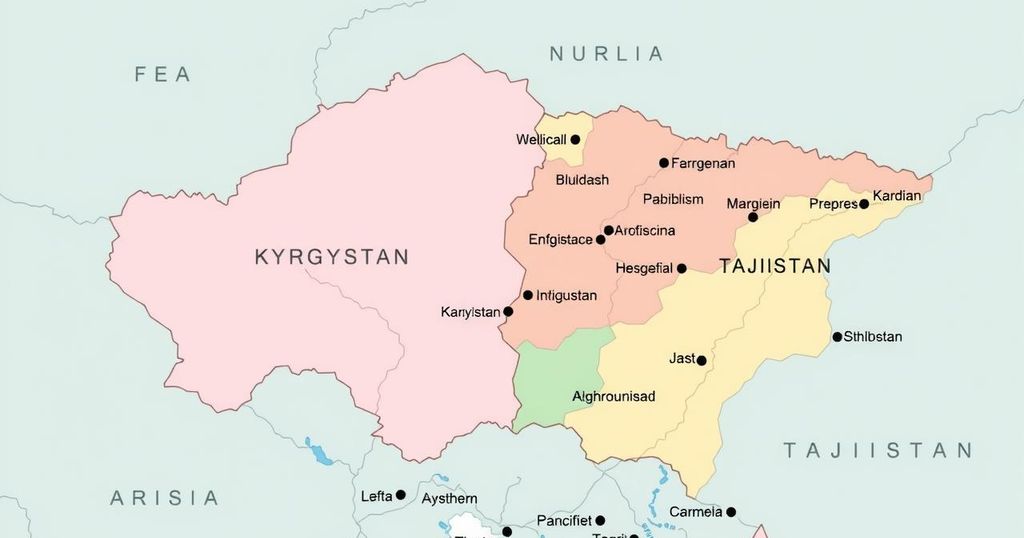Kyrgyzstan and Tajikistan’s Landmark Border Agreement: A Turning Point for Regional Stability
Kyrgyzstan and Tajikistan have signed a historic border agreement aimed at resolving a long-standing dispute that has caused significant violence in recent years. The agreement is viewed as a crucial step towards stability and cooperation in Central Asia, reflecting a shift in relations between the two nations. Key issues regarding territorial concessions and water-sharing arrangements remain, highlighting the complexities of the agreement’s implementation.
A pivotal agreement has emerged between Kyrgyzstan and Tajikistan, aimed at resolving a longstanding border dispute spanning approximately 1,000 kilometers. This agreement is being heralded as a historic achievement, particularly in light of recent intense conflicts, which had resulted in numerous casualties and strained relations. The latest round of talks culminated in a cordial meeting between the two presidents, marking a significant shift from their previous tensions.
The negotiations have proved difficult, particularly as nearly half of the border remained disputed until recently. Disturbingly violent clashes in 2021 and 2022 underscored the critical need for resolution, causing widespread displacement and severe humanitarian concerns. Both nations had faced challenges, exacerbated by the historical context of Soviet-era border delineations.
In a significant diplomatic gesture, the leaders of the two nations expressed warmth during their recent meeting, contrasting starkly with previous encounters. An agreement was signed, reopening border crossings that had been closed for nearly four years, signaling a new phase of cooperation. However, underlying tensions persist in Kyrgyzstan, suggesting that the agreement’s implementation will require careful management.
Prior to the conflicts, border incidents had primarily remained minor, yet escalating issues surrounding water resources and territorial access had begun to escalate into violent confrontations. The introduction of advanced weaponry transformed the nature of these conflicts, resulting in significant civilian suffering, as reported by Human Rights Watch. These factors ignited a renewed urgency for both countries to come to the negotiating table on firm grounds for peace.
Discussions surrounding the border agreement involved complex negotiations over key resources and territories. Kyrgyz officials have reported that the exchange of territories and concession over pasture land represented significant hurdles. Particularly contentious was the status of the small strategic bridge in Kyrgyzstan, which took substantial negotiation time following protracted discussions.
As part of the agreement, the Kyrgyz village of Dostuk has been transferred to Tajikistan, raising concerns regarding the future of its residents and access to resources. Although Kyrgyz lawmakers have voiced apprehensions about the implications of such transfers, the government aims to ensure stability and security for communities affected by the border adjustments.
In conclusion, the border agreement between Kyrgyzstan and Tajikistan represents a monumental stride toward peace and stability in the region. This development, which comes on the heels of significant disruptions and bloody conflicts, marks a hopeful transition from a history of tensions to a future grounded in cooperation and mutual benefit. Yet, as implementation begins, the focus will need to remain on community welfare and managing the expectations surrounding this transformative agreement.
Original Source: www.rferl.org




Post Comment